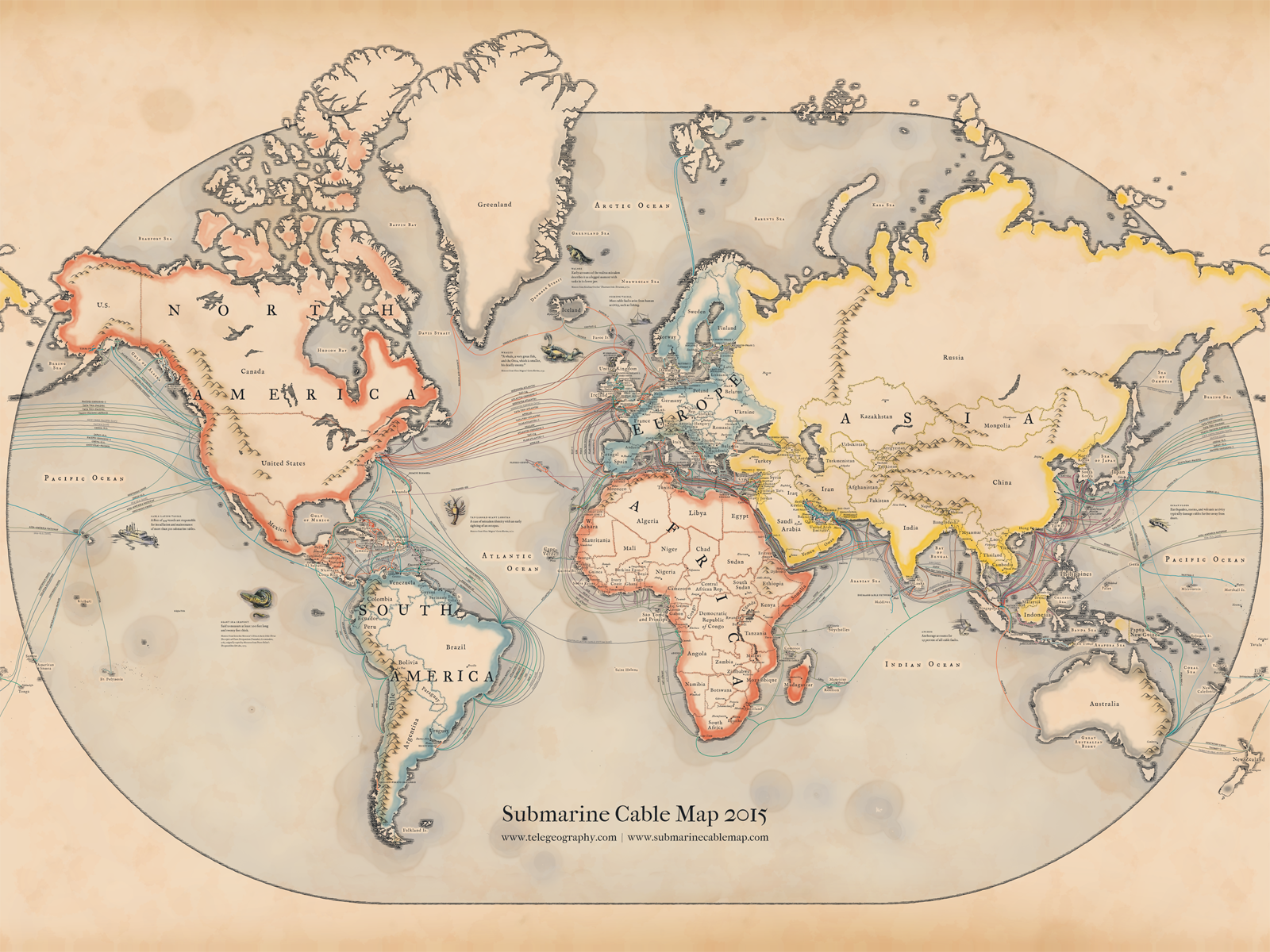Digital Infrastructure
A Constant State of Alarm - The Undersea Network
Excerpts from The Undersea Network, Duke Press, 2015, by Nicole Starosielski.
These excerpts are found in an article on The Undersea Network, at Scientific American:
This vision of autonomous networks is shaped more by Hollywood cinema than by actual cable operations. In reality, our global cable network is always in a sort of crisis and, at the same time, highly dependent on humans to power the steady flow of information transmissions.
It would perhaps be more precise to say that cables are always in a state of “alarm.” An “alarm,” in network-speak, is anything from an indication that the cable has been severed to a reminder about a needed computer update.
Even if our signals continue to pass through cable systems without delay, the undersea network never quite functions perfectly on its own, that is, without alarm and without human assistance.
When I ask operators about the vulnerabilities of today’s undersea network, many express concerns about downsizing and retirements. They fear that carefully sustained industry knowledge will be lost and that there will be nobody to take their place that will adhere to the same standards of reliability. Recruiting the next generation of workers is difficult. There is no direct path to the industry and it remains largely invisible to the public.
(Revised and republished April 12th, 2025)
Undersea Cables and Cybersecurity in Australia
Australia’s vulnerable submarine cables, by Jessica Woodall at The Australian Strategic Policy Institute
Scattered across the ocean floor in intricate webs, submarine cables transfer high data volumes between onshore nodes. Five main international cables connect Australia to cyberspace and global voice networks. They carry 99% of Australia’s total internet traffic, dwarfing the capacity of satellites. Submarine cables are vital to our communications, economic prosperity, and national security. They also tend to break. A lot.
In most regions of the world this isn’t unexpected, or particularly worrying. Submarine cables aren’t much thicker than a garden hose and for the most part sit untethered and unprotected on the sea floor. Inadvertent breakages from ship anchors, nets and natural phenomena such as undersea earthquakes occur frequently, averaging at least one a week. To mitigate this risk, international agreements between cable operating companies are extensive, repair ships are quickly deployed and traffic is usually rerouted through other cables.
Unfortunately, the situation for Australia is more complicated. Sitting in the Southern Hemisphere, we’re largely isolated from the busy network of Transatlantic and North Asian Cable lines. We’re also unable to use overland fibre optic cables from other countries, leaving us reliant upon just a handful of international undersea cables.
Image below: Australian submarine cables at submarinecablemap.com

(Revised and republished April 12th, 2025)
Sea Monsters and Submarine Cables
Vintage-style map of submarine cables by TeleGeography (Wayback Machine link).
This year’s map pays tribute to the pioneering mapmakers of the Age of Discovery, incorporating elements of medieval and renaissance cartography. In addition to serving as navigational aids, maps from this era were highly sought-after works of art, often adorned with fanciful illustrations of real and imagined dangers at sea. Such embellishments largely disappeared in the early 1600s, pushing modern map design into a purely functional direction.

To bring back the lost aesthetic that vanished along with these whimsical details, TeleGeography referenced a variety of resources in the design process. One of the most invaluable was Chet Van Duzer’s Sea Monsters in Medieval and Renaissance Maps book, which provides arguably the most complete history of the evolution of sea monsters and map design from this period. Our final product is a view of the global submarine cable network seen through the lens of a bygone era.
There's an interactive online version of the map as well:
http://submarine-cable-map-2015.telegeography.com
(via Vox)
(Revised and republished April 12th, 2025)
I Desire to Become Data
Fragments on Machines, a film by Emma Charles
An interesting and very artistic take on the materiality of digital culture, and the physical structures that support modern communication, computation, and data storage. The ventilation covers and shafts in the beginning of the video seem so mundane, but just a few steps inside is an entire world of noise and movement.
My muscle has been replaced by flex and copper. My brain a server. Ones and zeros my voice. I exist as a phantom, an iridescent color. I speak in shimmering tones to the hidden construction of the form. I desire to become data.
(Revised and republished April 13th, 2025)